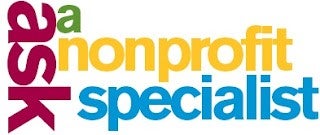Research and recommendations for effective, day-to-day nonprofit practice from ASU faculty, staff, students, and the nonprofit and philanthropic community.
What’s a nonprofit executive to do when all the forces of nature, politics, and the economy conspire to thwart organizational (program and resource) development?
The answer lies in leveraging the crisis strategically for the opportunity that lies within the eye of the storm, in daring to lead beyond expectations and risking professional comfort.
Yes, a unique and seismic convergence of economic (the Great Recession and its aftermath), political (Congressional stalemate on the national budget and sequestration), social (demographic shifts and changes in attitudes and values regarding social responsibility), and technological (the democratization of social media and alternative forms of charitable expression) have taken a financial and programmatic toll on nonprofits. Today’s storm is unlike those of past economic downturns in both scale and duration.
In other words, times are rough for nonprofits, and every indication is that they are going to get even rougher and more challenging. These dramatic changes in the marketplace have broad implications for organizational governance and for the viability of the conventional nonprofit business model.
A number of long-standing organizations have fallen by the wayside. Some are gone because of failures of governance, others because of funding cutbacks they could not withstand, others for their inability to adapt to a highly competitive marketplace. Still others remain at…
Read moreSupporting a cause is now easier than ever.
Forget throwing on overalls and a pair of gloves to pick up trash or dig through rubble. Never mind laboring in the heat to plant trees or paint houses. Scrap the notion that in order to support a cause, you have to actually get your hands dirty.
These conceptions are facetious, of course, but according to a current trend sweeping the nonprofit scene, all that’s necessary to support a cause you’re passionate about is clicking “like” on a Facebook page. Five minutes and you’ve done your good for the day. Now you can return to perusing Reddit with a smug smile plastered across your face.
Sadly, slacktivism – actions performed via the Internet in support of a political or social cause but regarded as requiring little time or involvement (courtesy of the Oxford Dictionary) – is the popular avenue of support when it comes to contemporary activism. Many charities or nonprofits only require activists to “like our Facebook page” or “retweet this” or “hashtag that.” Sure, work is being done and lives are being improved, but the impact is often times minimal. You don’t have to physically help to help, you simply have to help spread the word, while exuding as little physical activity as humanly possible. But does that really help?
| … |
Ask a Nonprofit Specialist: What does the repeal of Arizona's solicitation law mean to my nonprofit?

Question: How have the requirements for charitable solicitation registration in Arizona changed with new legislation? What does this mean for my organization? Are we still required to file annual reports? What about internet based fundraising? Are we required to register with other states? Is this good or bad for nonprofits in Arizona?
The Arizona legislature recently passed legislation that repeals Arizona’s solicitation registration laws and the requirement that nonprofit organizations file annual solicitation registration or renewal forms with the Secretary of State. This should not be confused with the Corporate Annual Report required by the Arizona Corporation Commission, which is still required.
Most states typically regulate nonprofit organizations through solicitation laws that are concerned with charitable solicitations from the general public. These laws were designed to protect the public from misleading or unethical fundraising practices.
…
Read more
Welcome to Research Friday! As part of a continuing series,we invite a nonprofit scholar, student, or professional to highlight current research reports or studies and discuss how they can inform and improve day-to-day nonprofit practice.
Conducted in January and February 2013, Nonprofit Finance Fund’s 2013 State of the Sector survey assessed the financial and management challenges facing 5,983 organizations across the country. As income disparity continues to grow, many nonprofits are struggling to meet overwhelming community need amid the stark realities of funding cuts. Many are recognizing that this dynamic may be here to stay.
When NFF began this survey in 2009, many of our clients were in “triage” mode: they were dealing with mission and finance-…
This is part two of Carolyn Owen's series on gathering and using data for grant proposals. Read part 1 here.
Data is a vital part of your grant application. It’s the link that turns a bunch of random declarations about the issue your nonprofit is addressing into a statement with weight and relevance. Data can illustrate the scope of the problem, the need for your program, and why it will be successful.
So how do you intertwine data in the proposal so that it supports and amplifies your cause rather than obfuscate it? Although I would not claim to be an expert, I’m happy to share what I’ve learned in close to 15 years of researching and compiling grant proposals.
Remember the data should be:
- Recent, within the past 2 years if possible
- As local as possible, relating to the community, city or state where your program is located
- From a recognized, reputable source - a federal agency, well respected research group such as Annie Casey Foundation, or peer journal
- Related to the need to be addressed by your program.
Begin by thinking about what you are addressing specific to this application. Start with the need and then find data to support your…
Read more